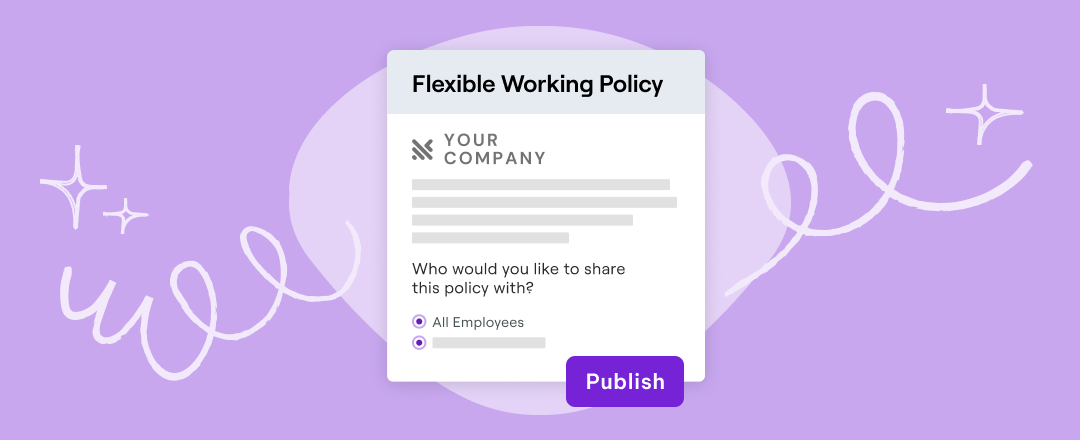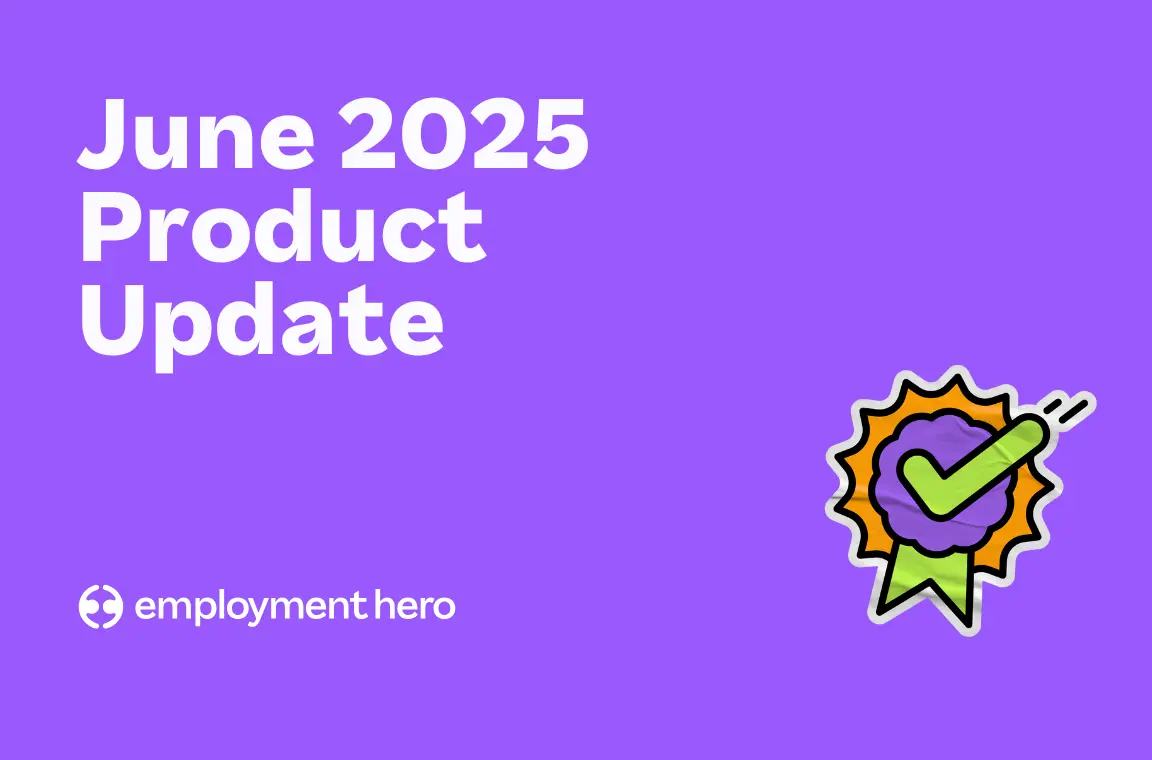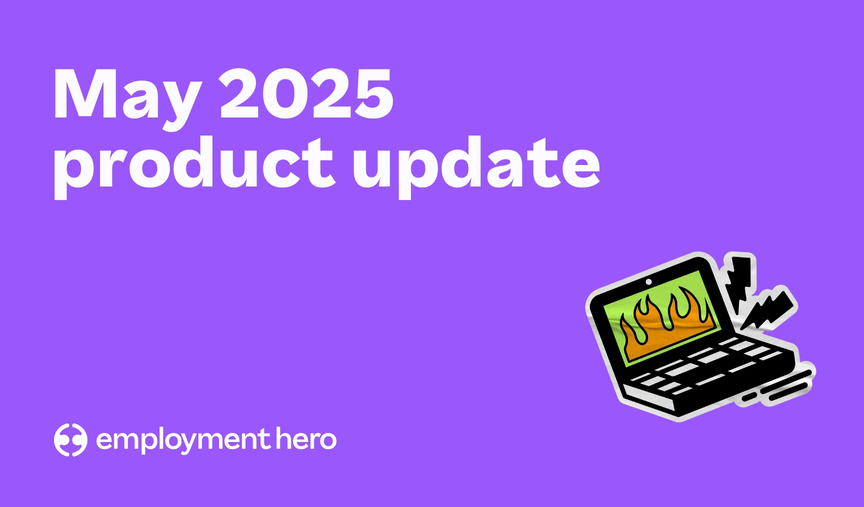Best practices for flexible work arrangements (FWAs) in Singapore
Flexible work is the future. Here’s everything you need to know about the new Tripartite Guidelines on Flexible Work Arrangement Requests (TG-FWAR).

Have you heard about the recent launch of the Tripartite Guidelines on Flexible Work Arrangement Requests (TG-FWAR)?
The guidelines outline how employees should request for FWAs and use them, and how employers (like you!) should handle these FWA requests. It will become a reference point for the Ministry of Manpower (MOM) when handling cases related to FWAs and is slated to come into effect on 1 December 2024.
As a business owner, HR leader or supervisor, how do the new guidelines affect you, and how can you prepare for the incoming changes? Don’t worry, we’ve got you covered! And even better, we’ve done the research to show that flexible working arrangements can actually benefit you and your employees. Read on to find out.
What are flexible working arrangements?
Mention flexible work arrangements, and the first thing that comes to mind for most people is remote working. But it’s more than just that! At its essence, it’s the ability to have some control over when, where and how work gets done. That can manifest in many ways, from reduced working hours to choosing your own start and finish times.
Flexible working arrangements usually fall into one or more of these three categories:
- Flexi-place: Employees work flexibly from different locations aside from their usual office location (e.g. telecommuting, work-from-home)
- Flexi-time: Employees work flexibly at different timings with no changes to total work hours and workload (e.g. flexi-hours, staggered hours, flexi-shift, compressed work schedule)
- Flexi-load: Employees work flexibly with different workloads and with commensurate remuneration (e.g. job sharing, part-time work)
Ultimately, flexible working arrangements are about improving work-life balance to benefit both employees and employers.
Why are flexible working arrangements important?
There are so many reasons why flexible working is important. For simplicity’s sake, we’ve narrowed it down to a list of three.
1. Employees want more flexible work arrangements
There’s no doubt that flexible work arrangements are becoming a top demand for employees.
Our Remote Work Report previously revealed that flexibility remains a huge priority, and 46% of hybrid and remote workers would consider quitting their jobs if their employer directed them to return to the office full-time.
In addition, in our Talent Insights Report, 37% of respondents said they would be more enticed to accept a role in a different organisation if the employer offered flexible work options.
2. Flexible working reduces the gender pay gap
Did you know that Singapore ranked 49th in the Global Gender Gap Index 2023 rankings, below countries like the United States and the Philippines? According to data from the Ministry of Manpower (MOM), even though the gender pay gap has narrowed over the last five years, women in Singapore still earn 14.3% less than their male counterparts.
Women continue to take on the bulk of unpaid work and care duties for elderly parents or children and require flexible working to juggle their unpaid work with paid work. Unfortunately, most high-paying jobs don’t offer such flexibility, so they remain male-dominated while women gravitate towards lower-paying jobs that do.
As an employer, you can encourage both men and women to take up flexible work by normalising and valuing flexible work schedules. The more men who adopt flexible work, the more likely they are to perform unpaid work at home. In short, flexible work helps to equalise the gender pay gap, as it encourages a more balanced share of unpaid and paid work between men and women.
3. Flexible work arrangements are good for business
Believe it or not, flexible working is good for business. Flexible work practices reduce absenteeism and stress, improve morale, and increase employee happiness and retention. The list goes on — and there are plenty of studies available that prove these true.
It can also bring huge cost savings. Remote work helps reduce overhead costs like lease expenses, utilities, insurance, supplies, and maintenance. These fees add up quickly, and all those savings could be redirected to more strategic initiatives for your business, like improving employee well-being and engagement.

What are the different types of flexible work arrangements?
Flexible working is about giving employees power over their work schedules, and that can play out in many ways.
Here are the different types of workplace flexibility:
- Part-time work
- Staggered time
- Compressed work schedule
- Telecommuting
- Job sharing
- Creative scheduling
- Employee choice of days off
- Flexible hours (flexi-hours)
- Flexi-shift
- Interim work
- Phasing in or out
- Phased retirement
- Project-based work
- Retirees cover for workers on leave
- Seasonal work
- Shift-swapping
For the full list of flexible work arrangements, refer to our Flexible Working Policy Template.
On top of these offerings, we’ve also seen innovative companies like Netflix, Virgin and General Electric offer things like:
- Unlimited vacation time;
- Extended paid paternity leave;
- Extended paid maternity leave;
- 4-day work weeks, and more.
What does the law have to say about flexible working?
Before we discuss how you can implement a flexible working policy, let’s take a quick look at the laws around flexible working in Singapore.
There’s currently no legal requirement for companies to offer FWAs in Singapore. However, as an employer, you’re strongly encouraged to adopt flexible work practices to promote work-life balance, enhance employee well-being, and improve organisational productivity.
If you fail to follow the Tripartite Guidelines on Flexible Work Arrangement Requests, you won’t be fined or penalised… But, you may be issued warnings and be required to attend workshops if you’re non-compliant.
Under the guidelines, you’re required to:
- Explore ways to accommodate FWA requests (where reasonably practical).
- Implement a process to manage formal FWA requests from employees.
- Communicate the process of submission and management of these requests.
- Evaluate FWA requests on a case-by-case basis.
- Provide a timely response to formal FWA requests within 2 months.
- Ensure that rejections (if made) should be based on reasonable business grounds and communicated in writing.
- Use internal grievance handling processes to manage concerns and grievances if they arise.
Employees’ rights to request flexible working arrangements (FWAs) in Singapore
Now you must be wondering, which employees have the right to request flexible work?
The requirements are fairly simple and straightforward — all employees who have completed probation (duration as determined by you) can make a formal request for FWAs under these guidelines.
Whilst not required, as an employer, you can also state in job advertisements and interviews what your FWA policy or approach to FWAs is. This will help you better manage job seekers’ expectations on what FWAs you can provide. And if you’re comfortable with it, you can also consider FWA requests from employees on probation.
Remember, as an employer or HR leader, you can really boost morale and productivity with flexible working arrangements that work for you and your employees. It’s also essential you handle all flexible work requests correctly, and we’re here to help!
If this is the first time you’re hearing about these guidelines, we highly recommend you attend one of TAFEP’s free monthly briefing sessions or Employment Hero’s upcoming webinar, held in collaboration with PD Legal, our partner law firm.

Submitting formal FWA requests
Here’s a quick summary of the overall process for employees to request a FWA, and for employers to consider formal FWA requests:
- The employee submits a formal FWA request to you.
- You properly consider the formal FWA request based on business needs.
- You communicate your decision within 2 months.
- If the FWA request is rejected, you’re encouraged to discuss possible alternatives with your employee.
How should a formal FWA request be made?
Ideally, you should communicate clearly on how employees can submit formal FWA requests, such as submitting via the work portal or via email to their supervisor. As an employer, if you have stipulated certain requirements like using a specific format or template for making a formal FWA request, then employees should follow them accordingly.
If you haven’t stipulated requirements or processes yet, employees can simply make a formal FWA request in writing. The request should include the following:
- The date of the request
- The FWA requested for, including its expected frequency and duration
- The reason for the request
- The requested start date and end date (if relevant)
Here’s a handy template from TAFEP to help your employees request for a FWA.
If your employee’s request doesn’t meet the above requirements, it won’t be considered a formal request and won’t be covered under the Guidelines.
To help employees assess their own suitability for FWAs, TAFEP strongly encourages you to provide the following information:
- Types of FWAs employees can request, including those that may be available as a default;
- Reasons why certain job roles might not be suitable for specific FWA(s);
- Examples of why requests might be rejected; and
- Expectations for the use of FWAs.
How should employers respond to a formal FWA request?
1. Discuss FWA requests in an open and constructive manner
Discuss FWA requests in an open and constructive manner with your employees. FWAs should be created based on a mutual agreement, and be balanced in meeting both organisational and employee needs as much as possible.
If you run into any disagreements, address them through your organisation’s internal grievance procedure. As for employees, those who are unionised can seek assistance from their respective unions.
2. Consider FWA requests properly
When assessing an employee’s FWA request, focus on factors related to the employee’s job, as well as how the FWA may affect the business or the employee’s performance.
Whilst you can reject an employee’s FWA request, the rejection should be based on reasonable business grounds and not personal bias. TAFEP has laid out some examples of reasonable business grounds for the rejection of FWAs, such as:
- Cost: The FWA leads to a significant increase in cost burden.
- Detriment to productivity or output: The FWA leads to a significant decrease in the quantity or quality of individual, team or organisation’s productivity or output, or negatively impacts the organisation’s ability to meet customer needs.
- Feasibility or practicality: The FWA isn’t feasible or impractical due to the nature of the role; there’s no capacity to change other employees’ work arrangements; or you would have to hire new employees to accommodate the FWA request.
3. Communicate the decision in a timely manner
If you receive a formal FWA request, provide a written decision within two months of receiving it. Then, discuss any clarifications with your employee, and communicate your decision in writing.
If you reject the FWA request, include the reason for the rejection in writing, and discuss alternative options with the employee.
Still unsure on how to respond to a formal FWA request? Check out this sample template that TAFEP has created for employers.

Tips for managing remote employees in a flexible workplace
If you’re thinking about implementing a flexible working policy that allows remote working, or you already have one in place, there are a few things you need to keep in mind to make sure it runs smoothly.
1. Get the technology right
Technology is great, but only when it works. If you’re going to have a flexible workplace, then you need to have the tools to make it work. Are your employees equipped with the necessary hardware and software to do their jobs well? These tools help bridge the physical distance and make it easier to share updates, documents and feedback. Providing prompt technical support can also help resolve any issues quickly.
At Employment Hero, we’re remote-first and we equip all our employees with a monitor and a laptop. We primarily use Google Drive, so all our staff need is an internet connection (and passwords plus security clearance) to access their work files. All our employees can take their meetings from anywhere — we use Google Meet or Zoom for virtual meetings and Slack for general communication.
All in all, we’re happy to say that our remote workforce is well-versed in virtual meeting etiquette, and enjoys a great audiovisual experience when attending meetings remotely.
We also use the team management tool, Asana, to manage our projects and workflows. This means as a team, we’re able to quickly and easily assign tasks to each other and understand what each other is working on, from anywhere in the world.
2. Regular check-ins are sacred
Maintaining team alignment is incredibly important when it comes to managing a flexible team. That’s why our weekly WIP meetings and individual 1:1s with the team are sacred times.
When you’re working flexibly, there has to be some non-negotiables, and for us, this is it. Our weekly meetings are a chance for our team to touch base together as a group. Having direct time with your team members during 1:1 meetings allows you to discuss anything that might be unclear and raise any concerns about team or company objectives.
Set up a meeting cadence that suits your company objectives and team workflows. This routine helps managers stay informed about progress and any challenges employees may face.
Read more: How to support the wellbeing of remote employees
3. Set clear objectives
There are so many reasons why you should measure people on objectives rather than output.
At Employment Hero, objectives are critical to us moving forward as a business and are used to set clear expectations of the team’s goals. When measuring the output of remote work, you shouldn’t worry about where your team works from as long as you see progress towards your team objectives. Basically, as long as you’re seeing results, all is good.
Use the SMART framework to set objectives that are Specific, Measurable, Achievable, Relevant, and Time-bound. This framework ensures that your objectives are clear and attainable, allowing employees to focus on what’s important and track their progress effectively.
Focusing on objectives also allows your team to work when and where they are most productive, and it forms a framework for having conversations when things fall behind.
Read more: Setting OKR goals for remote teams
4. Promote accountability
Many employers struggle with trusting their employees when it comes to remote working and flexible work arrangements, so here are some practical strategies you can introduce to your team. Implement regular reporting mechanisms, such as weekly status reports or project updates, to keep track of progress and ensure accountability. This transparency helps to maintain trust and clarity.
In addition, empower your employees by giving them the autonomy to manage their tasks while holding them accountable for meeting their deadlines and deliverables. This balance fosters a sense of ownership and responsibility.
Ensure compliance with the Tripartite Guidelines today
If you’ve made it this far, congratulations! You should now know enough about flexible working arrangements to seriously consider its viability for your business.
We hope this article has been valuable to you in providing everything you need to know about the newly released Tripartite Guidelines on Flexible Work Arrangement Requests and more. If you’re looking to implement a Flexible Working Policy in your business now, check out our handy template that you can customise accordingly to your business needs.

By the way, did you know that with Employment Hero’s HR software, you can easily assign policies to employees, and get them to acknowledge it within the platform digitally? It’s fuss-free and convenient — plus it’s permanently stored in the platform, so they can refer back to it and access it anytime, anywhere!
If you aren’t using Employment Hero yet, just reach out to us and we’ll show you what we can do for your business.
Related Resources
-
 Read more: Product Update: June 2025
Read more: Product Update: June 2025Product Update: June 2025
Follow our June 2025 product update as we share all of the latest and greatest features we’ve released over the…
-
 Read more: Product Update: May 2025
Read more: Product Update: May 2025Product Update: May 2025
Follow our May 2025 product update as we share all of the latest and greatest features we’ve released over the…
-
 Read more: Product Update: April 2025
Read more: Product Update: April 2025Product Update: April 2025
Follow our April 2025 product update as we share all of the latest and greatest features we’ve released over the…









